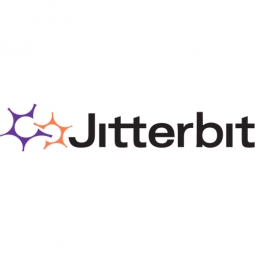Customer Company Size
Large Corporate
Region
- America
Country
- United States
Product
- Jitterbit Harmony
Tech Stack
- Salesforce
- DB2
- SQL
- Real-time APIs
- AS/400
Implementation Scale
- Enterprise-wide Deployment
Impact Metrics
- Cost Savings
- Productivity Improvements
Technology Category
- Platform as a Service (PaaS) - Connectivity Platforms
Applicable Industries
- Food & Beverage
Applicable Functions
- Discrete Manufacturing
- Logistics & Transportation
Use Cases
- Inventory Management
- Supply Chain Visibility
Services
- Cloud Planning, Design & Implementation Services
- System Integration
About The Customer
Dot Foods is the largest food service redistribution company in the United States. The company offers over 112,000 products from 830 food industry manufacturers. Dot consolidates those products and delivers in less-than-truckload (LTL) quantities weekly to distributors nationwide. Founded in 1960, Dot Foods is a $6.2 billion enterprise and is number 65 on Forbes list of largest private companies. The company's operations are vast and complex, requiring a robust and efficient system for managing data and processes.
The Challenge
Dot Foods, the largest food service redistribution company in the United States, was struggling with legacy systems that created silos of information. The company's accounts, locations, contact, preferred customer communications, and sales history were all caught on IBM technology first introduced in 1979. The company was using AS/400 based custom coded systems which led to duplicate data and fragmentation of data, processes, and systems. This resulted in an unstable digital infrastructure and reporting was slow and prone to inaccuracy. The company needed a solution that would allow them to phase out the AS/400 applications without disruption while improving data quality and reducing manual entry.
The Solution
Dot Foods implemented an Enterprise Integration Platform based on Jitterbit Harmony. Jitterbit Harmony is a full-featured cloud integration platform that brings together data, apps, and devices with and without coding. Using Harmony, organizations like Dot Foods can quickly and easily orchestrate, automate, and integrate various applications, business processes, and data views. Jitterbit Harmony makes it easy to integrate your systems so you can focus on what you do best. This solution allowed Dot Foods to create a more stable and efficient digital infrastructure, with users only needing to enter data once, leading to less manual entry and better data quality.
Operational Impact
Quantitative Benefit

Case Study missing?
Start adding your own!
Register with your work email and create a new case study profile for your business.
Related Case Studies.

Case Study
The Kellogg Company
Kellogg keeps a close eye on its trade spend, analyzing large volumes of data and running complex simulations to predict which promotional activities will be the most effective. Kellogg needed to decrease the trade spend but its traditional relational database on premises could not keep up with the pace of demand.

Case Study
HEINEKEN Uses the Cloud to Reach 10.5 Million Consumers
For 2012 campaign, the Bond promotion, it planned to launch the campaign at the same time everywhere on the planet. That created unprecedented challenges for HEINEKEN—nowhere more so than in its technology operation. The primary digital content for the campaign was a 100-megabyte movie that had to play flawlessly for millions of viewers worldwide. After all, Bond never fails. No one was going to tolerate a technology failure that might bruise his brand.Previously, HEINEKEN had supported digital media at its outsourced datacenter. But that datacenter lacked the computing resources HEINEKEN needed, and building them—especially to support peak traffic that would total millions of simultaneous hits—would have been both time-consuming and expensive. Nor would it have provided the geographic reach that HEINEKEN needed to minimize latency worldwide.

Case Study
Energy Management System at Sugar Industry
The company wanted to use the information from the system to claim under the renewable energy certificate scheme. The benefit to the company under the renewable energy certificates is Rs 75 million a year. To enable the above, an end-to-end solution for load monitoring, consumption monitoring, online data monitoring, automatic meter data acquisition which can be exported to SAP and other applications is required.

Case Study
Coca Cola Swaziland Conco Case Study
Coco Cola Swaziland, South Africa would like to find a solution that would enable the following results: - Reduce energy consumption by 20% in one year. - Formulate a series of strategic initiatives that would enlist the commitment of corporate management and create employee awareness while helping meet departmental targets and investing in tools that assist with energy management. - Formulate a series of tactical initiatives that would optimize energy usage on the shop floor. These would include charging forklifts and running cold rooms only during off-peak periods, running the dust extractors only during working hours and basing lights and air-conditioning on someone’s presence. - Increase visibility into the factory and other processes. - Enable limited, non-intrusive control functions for certain processes.

Case Study
Temperature Monitoring for Restaurant Food Storage
When it came to implementing a solution, Mr. Nesbitt had an idea of what functionality that he wanted. Although not mandated by Health Canada, Mr. Nesbitt wanted to ensure quality control issues met the highest possible standards as part of his commitment to top-of-class food services. This wish list included an easy-to use temperature-monitoring system that could provide a visible display of the temperatures of all of his refrigerators and freezers, including historical information so that he could review the performance of his equipment. It also had to provide alert notification (but email alerts and SMS text message alerts) to alert key staff in the event that a cooling system was exceeding pre-set warning limits.

Case Study
Coca-Cola Refreshments, U.S.
Coca-Cola Refreshments owns and manages Coca-Cola branded refrigerators in retail establishments. Legacy systems were used to locate equipment information by logging onto multiple servers which took up to 8 hours to update information on 30-40 units. The company had no overall visibility into equipment status or maintenance history.



